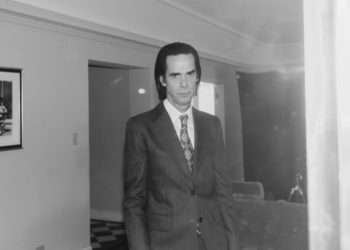This article is part of the Fine Arts & Exhibits special section on how creativity can inspire in challenging times.
A life-size cow made out of butter. Quilts created by incarcerated men. Many, many versions of the Declaration of Independence.
With the nation’s 250th birthday upcoming in July, museums and historical societies are opening exhibitions this fall commemorating the event with shows as diverse as the country itself.
Viewers will have their choice of exhibitions highlighting state fairs, prison art projects and the international impact of the country’s founding documents — just a few of the many events, some of which have started rolling out.
The anniversary comes at a time when the Trump administration is mandating that cultural institutions and educational organizations re-examine how they view, present and teach topics like citizenship, free speech and even slavery. In August, the Trump administration published a list of Smithsonian exhibits and programming it objected to, including those it said promoted homosexuality and “woke” activism.
The administration and Smithsonian executives are still in talks about how to handle some of these issues, but most museums, which are private, are unaffected by the White House demands.
“We are the guardians of authentic materials, documents, objects and art, and it’s really our job to tell these stories,” said Louise Mirrer, president and chief executive of the New York Historical, which is offering two commemorative exhibitions and an online project this fall. “I am hoping that people will take away from the whole range of exhibitions that we’re doing that democracy was achieved as a result of a struggle and that it was hard fought and hard won.” And she added, “that it is something that needs to be safeguarded.”
“On Our 250th,” created by the New York Historical in collaboration with 26 other historical societies and museums nationwide, allows people to post on a website their birthday wishes for America and hopes for the future of its democracy.
Scattered like Post-it notes across the web page and signed only with first names and states, the wishes tend to focus on living together more harmoniously; for example, Myair of Michigan writes succinctly, “No racism.”
About 10,000 notes have been posted so far, both online and on physical walls set up in participating museums, said Ken Weine, senior vice president and chief content officer for the museum. The notes are monitored for hate speech and highly partisan content before they are posted, he said.
An exhibition, “Stirring the Melting Pot: Photographs from The New York Historical Collection,” running from Nov. 28 to March 29, highlights a fundamental part of the nation’s history and the so-called American experience. It includes about 100 photos of immigrants throughout the last century, from well-known images of tenement life in the early 20th century to less-familiar scenes surrounding the General Slocum disaster of 1904, when a ship carrying more than 1,300 passengers for a day trip up the East River in New York caught fire. The final death toll was 1,021, the largest in the United States until it was surpassed on 9/11.
The photos show how the countries from which immigrants hailed shifted over the decades — as did the landscape of New York City itself — as new arrivals’ places of worship, schools and restaurants replaced those of the previous influx.
“The style and variety has changed,” said Valerie Paley, director of the museum’s library. “The built environment has changed. But the vitality hasn’t changed.”
A second exhibition at the New York Historical, “Declaring the Revolution: America’s Printed Path to Independence,” focuses on 67 pieces of printed material on loan from the David M. Rubenstein Americana Collection, such as official documents, as well as pamphlets, broadsides and journals. It runs from Nov. 14 to April 12.
The Declaration of Independence makes two appearances in the exhibition: its first newspaper printing, in the Pennsylvania Evening Post in July 1776, and a rare copy from 1823. The original is in the National Archives.
One of the more unusual items is a 1773 slave petition for freedom written by literate enslaved men from Boston and addressed to Massachusetts elected officials.
“Increasingly, Americans were using the metaphor and symbolism of slavery to describe their relationship with the British crown,” said Mazy Boroujerdi, the exhibition’s curator. That didn’t go unnoticed by actual enslaved people; the petition noted that “we expect great things from men who have made such a noble stand against the designs of their fellow-men to enslave them.”
The four men were petitioning to be allowed a day a week to earn their own wages to buy their freedom. The petition was met, Boroujerdi said, “with something close to silence.”
The ongoing impact of the Declaration of Independence — nationally and internationally — is the subject of “The Declaration’s Journey,” running through Jan. 3, 2027, at the Museum of the American Revolution in Philadelphia.
Demonstrating the complicated history of the Declaration’s meaning, the exhibition opens with a juxtaposition of the Windsor chair that Thomas Jefferson is believed to have used when drafting the Declaration of Independence in the summer of 1776 and the prison bench from Martin Luther King Jr.’s cell in Birmingham, Ala. While in jail, King wrote his famous 1963 “Letter from Birmingham Jail,” in which he quotes the Declaration.
The exhibition showcases about 120 documents and artifacts connected to different independence movements and representing around 20 nations. It includes one of the first original printings — a broadside — of the Declaration of Independence, once owned by a Philadelphia merchant, Jonas Phillips, who tried to send it in late July 1776 across the Atlantic to one of his contacts in Amsterdam.
It was intercepted at sea by the British, said Matthew Skic, the museum’s director of collections and exhibitions, and ended up in the British national archives. It will arrive shortly after the exhibition opens, Skic said, returning to Philadelphia for the first time in two and half centuries.
An exhibition at the Renwick Gallery in Washington, D.C., looks at the country’s history through a completely different lens: state fairs. The Renwick is part of the Smithsonian American Art Museum. The Smithsonian is offering a variety of programing leading up to the birthday, including the reopening of a historic carousel on the National Mall and a sweeping exhibition about the nation’s founding at the National Museum of American History. Both are scheduled to open in March.
“State Fairs: Growing American Craft,” which will run until Sept. 7, brings together two floors of more than 240 artworks from state fairs in 40 different states and four tribal nations.
Mary Savig, curator in charge at the Renwick, said when she started thinking about creating the show five years ago, “we thought it would really align well with the 250th.” The first state fair took place in Syracuse, N.Y., in 1841 and many others “started when migration was happening from the east to the west. It was a way of establishing the culture of the state through these craft competitions.”
Which brings up the butter cow. Competitive butter sculpting is a staple of some fairs (see “Butter,” a 2011 movie about such a competition at the Iowa State Fair). The full-sized Jersey cow was carved by Iowa State Fair’s official butter sculptor Sarah Pratt over one week in July and is exhibited in a custom-built, life-size refrigerated case, Savig said.
Some 800 pounds of butter were brought in from Minnesota; the artist processed the butter in one room and then, bucket by bucket, moved it into the refrigerator to carve it. “That was a challenging logistic,” Savig said. She added that the exhibition had not been reviewed by the Trump administration.
Other items include quilts, painted porcelain and crop art, which is a popular competition at the Minnesota State Fair; it’s art made from seeds native to the state. On view is a replica of Dolly Parton, with straw as her hair.
The exhibition is a way to portray the country’s history through fair craft, but it’s not simply looking backward. Savig said many state fairs have seen an increase in the number of visitors every year.
“I think there might be a predisposition to think that the work is going to feel nostalgic or nationalistic, but I think the works feel very much reflective of the current moment,” she said.
Perhaps not surprisingly, quilts, which have a long and significant history in the United States from antebellum times, appear in a few of the exhibitions commemorating the country’s 250th.
Besides the Renwick show, the Fairfield University Art Museum in Connecticut exhibition “Stitching Time,” which runs until Dec. 13, highlights 12 quilts created by men incarcerated in Louisiana State Penitentiary, also known as Angola prison. It is one of three exhibitions tied to the 250th anniversary offered by the museum.
The quilts are part of the Social Justice Collaboration Quilts Project, which coordinates the quilting initiative within and outside the prison.
One quilt in the exhibition, “Red, White and Baldwin,” appears at first glance like a traditional quilt with multicolored squares; a closer look shows some of those squares are portraits of James Baldwin, the writer and Civil Rights activist. Another is covered with the name of Eric Garner, who was killed by New York police in 2014, and his last words, “I can’t breathe.”
“These are artworks,” said Carey Mack Weber, the museum’s executive director. “They are truly pouring their souls into these and expressing their feelings on their political views, on their collective history.”
As to how these connect to the 250th anniversary, she said, “When you look at the beautiful artwork, you’re also forced to grapple with the realities of incarceration,” she said, adding, “this is an area where we can think about trying to create a better future.”
The post As the Nation’s Birthday Approaches, Museums Lead the Way appeared first on New York Times.




